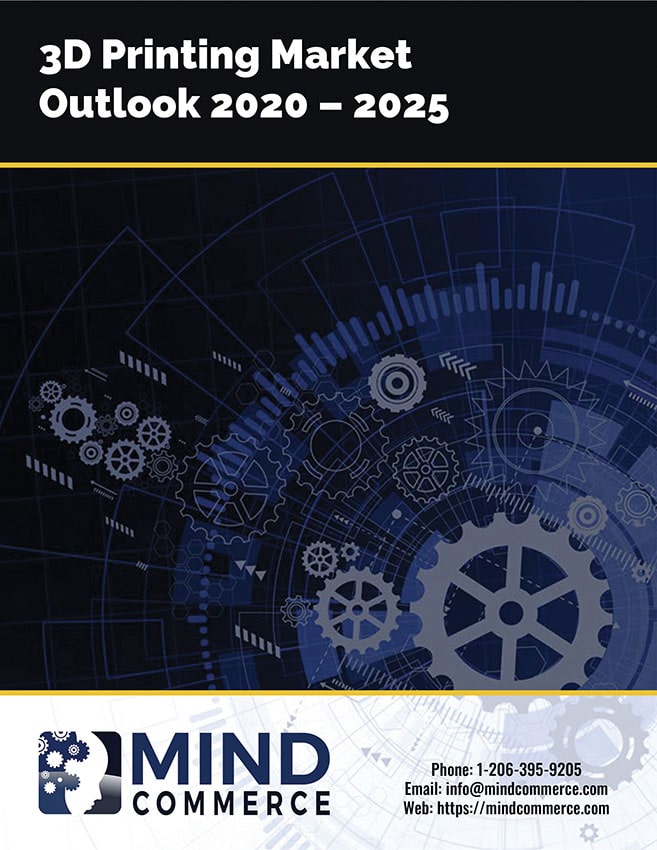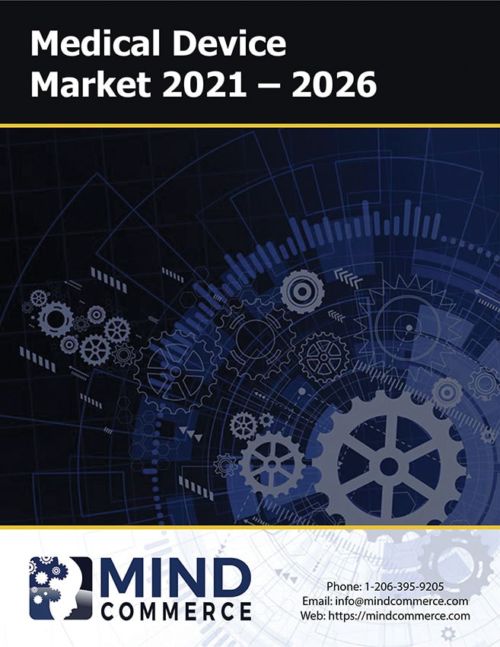Description
Applications and services facilitated by 3D Printing include prototyping, printing spare parts, and producing finished goods across many industry verticals including manufacturing, healthcare, electronics, consumer goods, automotive, aerospace, and many more. The 3D Printing Market ecosystem is facilitating the digitization of fabrication, integration, and control of many different products.
3D Printing Market Dynamics
This trend is accelerating as evidenced by recent surveys indicating that 3D Printing and other forms of additive manufacturing will have a positive impact, increase creativity and dramatically improve time to market, especially for certain goods and services. Mind Commerce sees the following 3D Printing Market developments unfolding:
- Every person in the developed world will come contact with 3D printed products by 2025
- Virtual Twins tech, teleoperation, and 3D printing will transform the producer/consumer relationship
- 3D Printing will be an essential building block (along with 5G, AI, and IIoT) for Industry 4.0 transformation
- There will be a need for solutions to authenticate, track, monitor, and account for the 3D printing industry
3D printing accelerates democratization in the manufacturing process making masses involved in the innovation and development process. Individuals and collaborative teams can participate in design and manufacturing end products while reducing barriers to innovation such as difficult requisition processes, long logistical wait times, and make the product faster. Robotic automation is advancing 3D printing applications beyond conventional manufacturing to encompass delivery of products and assets where and when they are needed. For example, specialized robotics are enabling innovative structure construction such as buildings, bridges, and other physical infrastructure.
In the healthcare arena, 3D printed prosthetics is facilitating significantly faster design and delivery for amputee solutions as well as prototyping and try-before-you-buy for patients. 3D custom implants provide efficient and substantially more expeditious delivery of bone replacement material for cancer patients. In fact, the publisher sees 3D printing in the healthcare market rapidly moving to mainstream adoption and usage by 2025.
In the enterprise and industrial arena, the fabrication, integration, and control of virtually any product is increasingly becoming digitized. This trend is accelerating as evidenced by recent surveys indicating that 3D Printing and other forms of additive manufacturing will have a positive impact, increase creativity and dramatically improve time to market, especially for certain goods and services.
3D printing communities of interest (such as those entities that use 3D printers and related tools including the use of more plugins or online apps) will move beyond mere integrated 3D printing networks to become a larger scale ecosystem. This is anticipated to be a fully integrated 3D ecosystem including 3D design, modelling and simulations, prototyping, and fabrication. This is driven in part by lower-cost communications infrastructure and services as well as availability and adoption of tools to support 3D including immersive tech and IoT solutions.
Mind Commerce sees an emerging producer-consumers (e.g. “prosumer”) 3D printing market emerging in which everyday consumers engage in at least one part of the evolving connected manufacturing industry. Some trivial examples exist today such as Hero Forge, a company that provides tools for consumers to construct their own uniquely customizable fantasy role playing figures. We anticipate that the ability for self-help design and manufacturing with this prosumer model will become commonplace for many durable goods, causing disintermediation throughout supply chains, most notably with traditional manufacturers and retail outlets.
3D Printing Market Report
This report provides multi-dimensional analysis of the 3D Printing market including hardware manufacturers, service providers, application providers, software providers, raw material providers, and communities. The report also assesses the market impact of intellectual property, different technologies and strategies, raw material supplies, and other key factors across industry verticals globally and regionally including forecasts for 2020 to 2025.
Click Here for More Mind Commerce Reports






